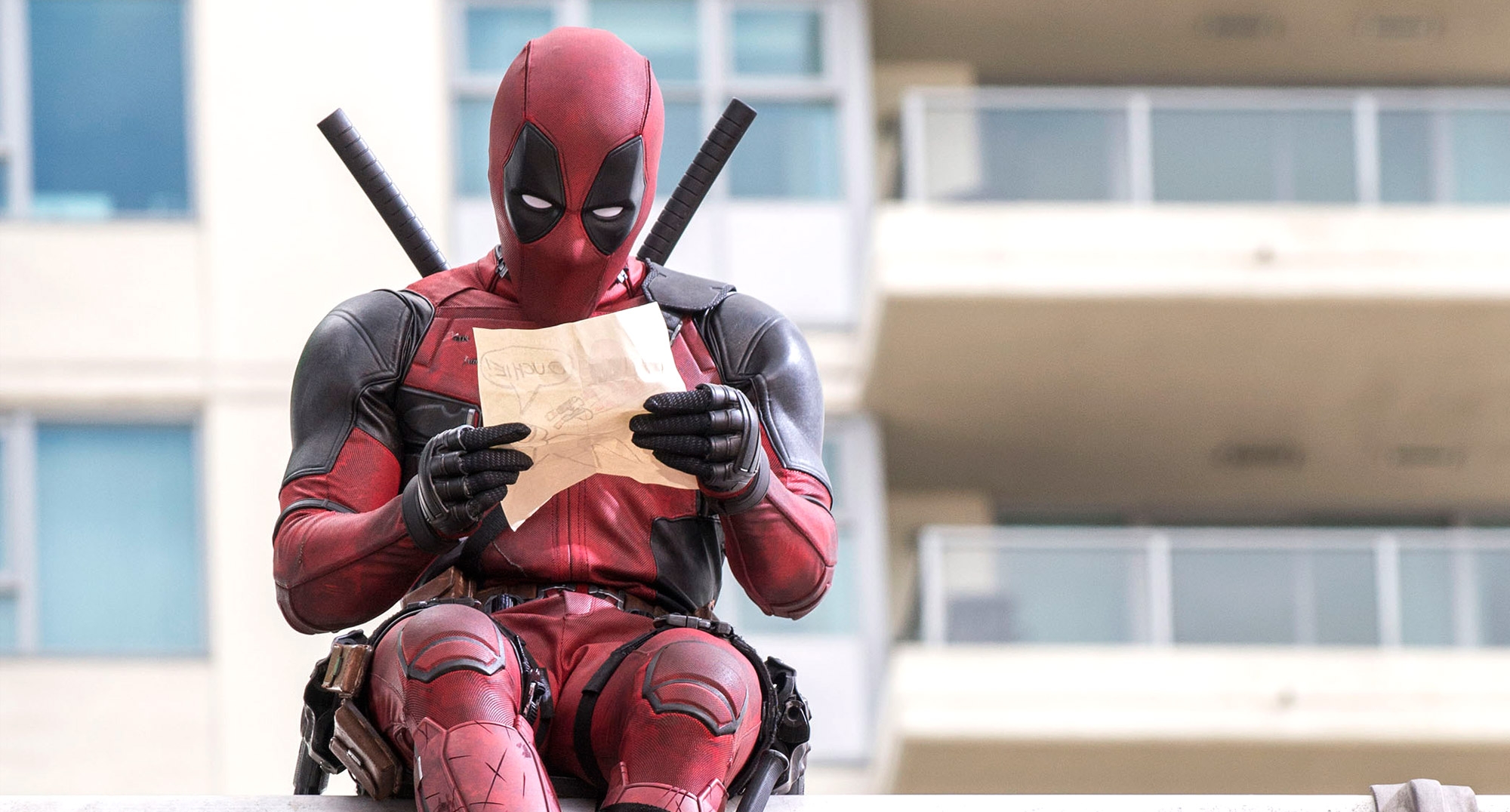Director: Tim Miller
Starring: Ryan Reynolds, Morena Baccarin, Ed Skrein, T.J Miller, Stefan Kapičić, Brianna Hildebrand
Deadpool was introduced into the Marvel Universe in the early 1990s. Created by the king of 90s ‘extreme’ comics, Rob Liefeld (and writer Fabian Nicieza), he has become one of Marvel’s most popular characters. The original badass mercenary appearing in the pages of X-Force was pretty much a carbon-copy of DC Comics’ Deathstroke. (Deathstroke’s civilian name is Slade Wilson; Deadpool’s civilian name is Wade Wilson. Marvel barely even bothered to file off the serial number). Writer Joe Kelly and artist Ed McGuinness launched Deadpool’s first solo series and introduced the humour that has become its defining feature, turning The Merc with a Mouth into the Marvel’s fucked-up version of Bugs Bunny. During the 2000s, Deadpool exploded in popularity and a glut of comics were produced — the good, the bad and the aggressively mediocre. In the hands of good creators, Deadpool has been a compelling and anarchic anti-hero. (I’m partial to the recent Gerry Duggan/Brian Posehn-written run in which our guy fights zombie George Washington, marries a succubus and has an emotionally devastating trip to a North Korean concentration camp). In weaker stories, Deadpool becomes the comic-book equivalent of Family Guy.
Cinematically, Deadpool has had a rougher time of it. Ryan Reynolds played the role in the 2009 cinematic disaster known as X-Men Origins: Wolverine. The character was grossly misused, ending the film with his mouth sewn up. However there always was talk about Reynolds returning to the role in a solo film, and positive reaction online to leaked test footage (repurposed in the film as the first action set-piece) that insured Deadpool got the greenlight. Whilst there are a couple jokes in the final film about the character’s cinematic history, the film is actually much harsher on Reynolds other unsuccessful foray into superhero movies: 2011’s Green Lantern.
Structurally Deadpool is pretty much an 80s action flick with a self-aware protagonist. The plot is standard revenge fare: Deadpool has been wronged by the bad guy and is going to kill everyone standing in his path to vengeance. What distinguishes it from other revenge films is that its protagonist is a joke machine. He is constantly throwing jokes at the audience (with, in my opinion, more hits than misses, but there are definitely a few misses). Of the many attempts to make Reynolds into an action hero, this film is the first to really work. The character’s snarkiness plays well to Reynolds strengths as a comic actor. Props also have to go out to the costuming team who have created one of the most emotive masks in superhero cinema (a challenge which the Spider-Man films have struggled with).
In the supporting cast, Morena Baccarin plays Vanessa, the film’s love interest. She’s introduced through a sex scene which is actually pretty daring for a Hollywood release. Then she disappears from most of the film only to return at the end as a damsel in distress. Ed Skrein plays a pretty convincing bastard as the film’s heavy Ajax, but he’s also saddled with most of the film’s exposition and isn’t a particularly intimidating threat. I kept expecting that he would turn out to be working for a bigger villain, and then he just ended up being all there was.
The stand-outs in the supporting cast are Colossus (Stefan Kapičić) and Negasonic Teenage Warhead (Brianna Hildebrand), two members of the X-Men who take it upon themselves to bring in Deadpool. Colossus is just a good Russian dude who is 7 foot tall, made of steel and wants Deadpool to be a better person. That Colossus’ faith in human nature is continually undercut by Deadpool being a terrible person was my favourite running gag. Negasonic Teenage Warhead (a Grant Morrison creation, thus the name), is terrifying in the way that only a disaffected teenage girl can be.
The film’s action sequences are well staged, but not particularly inventive. Deadpool’s best sequence, a montage of Deadpool killing his way through Ajax’s underlings, also contains the best gag in the film (which I won’t spoil here, past that it involves an ice-hockey rink). The purpose of Deadpool’s beginning — a send-up of overblown opening sequences — made a lot more sense to me after I had looked up Tim Miller on Wikipedia and realised that he’s the guy who put together the title credits for Fincher’s The Girl with the Dragon Tattoo.
Deadpool’s jokes are both its biggest strength and biggest weakness. The humour is very much pitched at a sophomoric level, and if you aren’t on board with that then you’re unlikely to get much out of the movie. The overuse of swear words in the film also feels gratuitous, as if the filmmakers were concerned that the blood and gore didn’t get the message through that this is a ‘grown up’ movie. For better or worse, Deadpool is likely to be the first MA15+ movie for a generation of 12-year-olds.
Deadpool is a fun movie, and the majority of fans will be pleased with how he’s been adapted to the big screen. I do think that audience’s reaction to the film will be very much dependent on whether they’re willing to go along with its very silly tone.
It’s also worth waiting around until after the credits to see Deadpool pay homage to the progenitor of the post-credits stinger.
Words by Kevin Chiat

